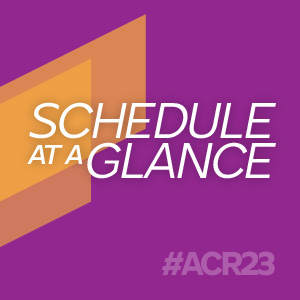Poster Session C
Vasculitis
Session: (2387–2424) Vasculitis – Non-ANCA-Associated & Related Disorders Poster III
2418: Effectiveness of Dose Spacing with Tocilizumab in Giant Cell Arteritis Treatment
Tuesday, November 14, 2023
9:00 AM - 11:00 AM PT
Location: Poster Hall
- SC
Sharon Cowley, MRCP, MBBCH
Tallaght University Hospital, Dublin
Dublin, Dublin, IrelandDisclosure information not submitted.
Abstract Poster Presenter(s)
Sharon Cowley1, Colm Kirby2, Patricia Harkins3, Richard Conway4, Grainne Murphy5 and David Kane6, 1Tallaght University Hospital, Dublin, Dublin, Ireland, 2Tallaght University Hospital, Dublin, Ireland, 3St James's Hospital, Dublin, Ireland, 4Trinity College Dublin, Dublin, Ireland, 5Cork University Hospital, Cork, Ireland, 6Tallaght University Hospital & Trinity College Dublin, Dublin, Ireland
Background/Purpose: The only steroid sparing agent approved for treatment of Giant Cell Arteritis (GCA) is the anti-interleukin-6 receptor antagonist tocilizumab. There remains uncertainty regarding treatment duration of tocilizumab and the optimal approach to medication withdrawal.
Methods: Patients who met the 2022 ACR/EULAR GCA classification criteria with a clinical diagnosis of GCA were prospectively enrolled. As per ACR/ Vasculitis Foundation guidelines all patients with a new diagnosis of GCA were started on tocilizumab if there were no contraindications. All patients had a 26-week glucocorticoid taper as per the GiACTA protocol. Tocilizumab was administered weekly for the first 12 months, and then every-other-week for an additional 12 months. Relapse of disease on tocilizumab was managed with temporary increases in systemic glucocorticoids.
Results: 55 patients with newly-diagnosed GCA were included. Of these, 27 patients did not receive tocilizumab treatment for a variety of reasons; recent or active treatment for malignancy (7), history of diverticulitis (3), patient preference not to start (5), co-existing inflammatory condition for which other biologic treatment was preferred (1), patient frailty and/or recurrent infections (9), death before start of tocilizumab (1). 1 further patient only had one month of treatment before discontinuation for a drug reaction. 27 patients (49%) had weekly treatment with tocilizumab for 1 year. Of these only 17 had every second week tocilizumab at one year. 5 remained on a weekly dose due to previous visual loss and concern about preserving the remaining eye. 2 had other coexisting inflammatory diseases for which weekly dosing was required. 1 died of natural causes before dose spacing, and 2 stopped tocilizumab before spacing due to side effects. 27 patients had tocilizumab weekly for a mean of 15.7 months and 17 of had tocilizumab every-other-week at one year for a mean of 8.1 months. 2 patients (11.7%) had a major relapse on every-other-week tocilizumab (one aortic dissection and one with monocular visual loss). There were two minor relapses, one in the weekly dosing group and one in the two-weekly dosing group.
While on weekly tocilizumab, 1 patient had a minor infection treated in the community and 1 had a major infection (diverticulitis) requiring hospital admission. In the every-other-week tocilizumab group, two patient had minor infections treated in the community and no patient had a major infection requiring hospitalisation.
Conclusion: In a real-world prospective study cohort, only 49% (27/55) of patients were eligible for tocilizumab therapy (with GIACTA protocol steroid). 17/27 were eligible for dose reduction to every other week with 2/17 (11.7%) having major relapses of GCA at 24 months. In a real-life cohort tocilizumab therapy was only possible in 1 in 2 patients and when initiated was continued beyond the recommended period of 12 months in the majority of patients. Overall, 96% of patients in the weekly dosing group had relapse-free remission compared to 82% in the every-other-week treatment group. A dose reduction in tocilizumab after 12 months of weekly treatment maintained most patients in remission, had comparable safety outcomes and was cost effective.
.jpg)
S. Cowley: None; C. Kirby: None; P. Harkins: Janssen, 5; R. Conway: AbbVie/Abbott, 5, 6, Celltrion, 5, Fresenius Kabi, 6, Galapagos, 6, Janssen, 5, 6, Nordic Pharma, 5, Novartis, 5, UCB, 6, Viatris, 6; G. Murphy: None; D. Kane: None.
Background/Purpose: The only steroid sparing agent approved for treatment of Giant Cell Arteritis (GCA) is the anti-interleukin-6 receptor antagonist tocilizumab. There remains uncertainty regarding treatment duration of tocilizumab and the optimal approach to medication withdrawal.
Methods: Patients who met the 2022 ACR/EULAR GCA classification criteria with a clinical diagnosis of GCA were prospectively enrolled. As per ACR/ Vasculitis Foundation guidelines all patients with a new diagnosis of GCA were started on tocilizumab if there were no contraindications. All patients had a 26-week glucocorticoid taper as per the GiACTA protocol. Tocilizumab was administered weekly for the first 12 months, and then every-other-week for an additional 12 months. Relapse of disease on tocilizumab was managed with temporary increases in systemic glucocorticoids.
Results: 55 patients with newly-diagnosed GCA were included. Of these, 27 patients did not receive tocilizumab treatment for a variety of reasons; recent or active treatment for malignancy (7), history of diverticulitis (3), patient preference not to start (5), co-existing inflammatory condition for which other biologic treatment was preferred (1), patient frailty and/or recurrent infections (9), death before start of tocilizumab (1). 1 further patient only had one month of treatment before discontinuation for a drug reaction. 27 patients (49%) had weekly treatment with tocilizumab for 1 year. Of these only 17 had every second week tocilizumab at one year. 5 remained on a weekly dose due to previous visual loss and concern about preserving the remaining eye. 2 had other coexisting inflammatory diseases for which weekly dosing was required. 1 died of natural causes before dose spacing, and 2 stopped tocilizumab before spacing due to side effects. 27 patients had tocilizumab weekly for a mean of 15.7 months and 17 of had tocilizumab every-other-week at one year for a mean of 8.1 months. 2 patients (11.7%) had a major relapse on every-other-week tocilizumab (one aortic dissection and one with monocular visual loss). There were two minor relapses, one in the weekly dosing group and one in the two-weekly dosing group.
While on weekly tocilizumab, 1 patient had a minor infection treated in the community and 1 had a major infection (diverticulitis) requiring hospital admission. In the every-other-week tocilizumab group, two patient had minor infections treated in the community and no patient had a major infection requiring hospitalisation.
Conclusion: In a real-world prospective study cohort, only 49% (27/55) of patients were eligible for tocilizumab therapy (with GIACTA protocol steroid). 17/27 were eligible for dose reduction to every other week with 2/17 (11.7%) having major relapses of GCA at 24 months. In a real-life cohort tocilizumab therapy was only possible in 1 in 2 patients and when initiated was continued beyond the recommended period of 12 months in the majority of patients. Overall, 96% of patients in the weekly dosing group had relapse-free remission compared to 82% in the every-other-week treatment group. A dose reduction in tocilizumab after 12 months of weekly treatment maintained most patients in remission, had comparable safety outcomes and was cost effective.
.jpg)
Figure 1: Results
S. Cowley: None; C. Kirby: None; P. Harkins: Janssen, 5; R. Conway: AbbVie/Abbott, 5, 6, Celltrion, 5, Fresenius Kabi, 6, Galapagos, 6, Janssen, 5, 6, Nordic Pharma, 5, Novartis, 5, UCB, 6, Viatris, 6; G. Murphy: None; D. Kane: None.



